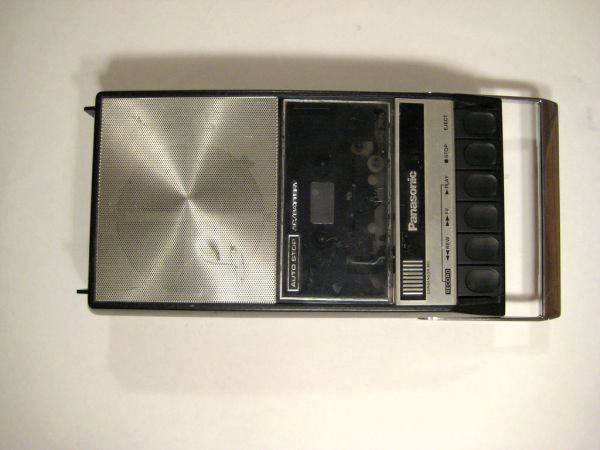There is no better way to hide a covert device than to stick it inside a larger conspicuous device.
That said… Essentially, this is a guide for making a data logging system for use with the breathalyzer microphone.
To accomplish this, an Arduino and a Logomatic SD data logger are embedded into an old and considerably large tape deck. The data is fed into the tape deck through an unassuming 1/4″ audio jack.
Step 1: Go get stuff
To do this, you will need…
materials:
– old tape deck or similar
– Arduino Diecimilia
– Logomatic V1.0 SD Data Logger (available from Sparkfun)
– SD card
– An SD card reader
– A 10K resistor
– A schotky diode
– 1/4″ jack (unless you already got one fo the breathalyzer mic)
– 9V battery connector
– 9V battery
– PCB
– hookup wire
– electrical tape
tools:
– philips head screwdriver
– soldering setup
– pliers and/or cutters
– power drill
Step 2: Prep the case
The first thing to do is open the case and determine where the arduino, data logger, battery and 1/4″ jack are going to be placed. This may mean, in many cases, removing some of the parts inside the device.
I decided that the best place to insert my electronics was in the battery slot of the tape player. Unfortunately, the battery slot was just slightly not deep enough for the Arduino. This was easily resolved by disassembling the case, breaking off some excess plastic and reassembling.
Once the plastic was broken, everything fit in with room to spare.
The only real rule with this is that there needs to be enough room to comfortably fit all of your parts inside. Don’t forget to factor in a reasonable place for mounting the 1/4″ stereo jack without creating too many problems.
Step 3: Insert the stereo plug
Once you have carefully determined where the stereo plug should be positioned, double check that it will actually work in that position. Once you are absolutely sure, drill a 1/4″ hole in the side of the case. Pass through your 1/4″ stereo plug from the inside and secure it on the outside with the mounting bracket.
In my case, I didn’t have to drill a hole. I was able to pass it through an existing hole in the case and secure it that way.
– Arduino Diecimilia
– Logomatic V1.0 SD Data Logger
For more detail: Discreet Data Logger using Arduino


